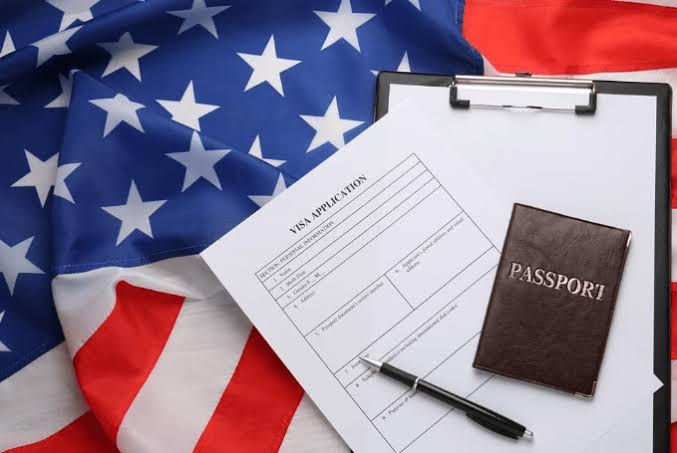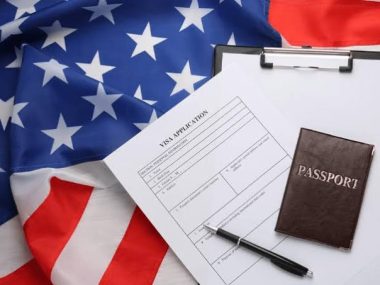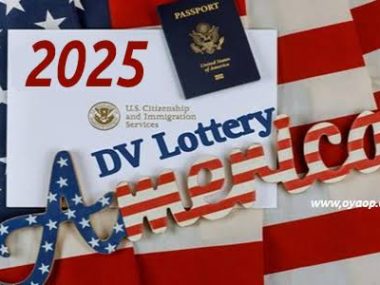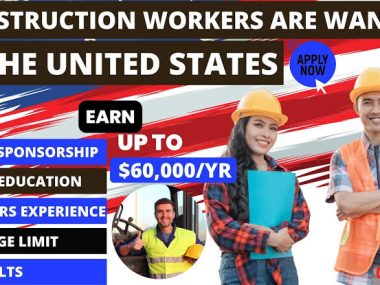Working in the United States: A 2025 Guide to Visa Sponsorship Opportunities
For decades, the allure of working in the United States has drawn skilled professionals from around the world. The promise of better pay, career growth, and access to global markets remains a powerful motivator — but the reality of getting there is more complex than glossy headlines suggest.
As 2025 approaches, the US labour market continues to evolve in response to demographic shifts, talent shortages, and changes in immigration policy. This article takes a clear-eyed look at what visa sponsorship really means, which roles and industries are most accessible, how to navigate the application maze, and what traps to avoid if you want to secure a job and build a new life in America.
Why Employers Sponsor Foreign Workers
Visa sponsorship in the US isn’t an act of charity. It’s driven by necessity. As sectors such as technology, engineering, healthcare, and finance struggle to fill specialist positions, many employers have no choice but to look abroad.
Put simply, sponsorship means an employer agrees to file a petition with US Citizenship and Immigration Services (USCIS) on your behalf, confirming you’re a genuine hire for a legitimate role. If approved, you’re granted legal permission to work and live in the country for a specified period.
For skilled migrants, this can be life-changing. For employers, it’s a costly and time-consuming process — so they want to be sure you’re worth it.
A Brief Tour of the Main Visa Types
Before you even think about applying, you need to understand the basic categories. Here are the ones most commonly used by foreign professionals:
H-1B Visa: This is probably the best-known. It’s for workers in specialty occupations that require at least a bachelor’s degree or equivalent. Think software engineers, data scientists, architects, and some finance roles.
L-1 Visa: This one is for intra-company transfers — for example, you’re employed by a multinational company overseas and they want you to move to their US office.
O-1 Visa: The ‘extraordinary ability’ visa. This is for people with outstanding achievements in fields like science, education, arts, or athletics. You’ll need to prove your accolades.
EB-2 and EB-3 Visas: Employment-based immigrant visas — these can eventually lead to permanent residency (‘green card’). EB-2 is for advanced degree holders or those with exceptional ability, while EB-3 is for skilled workers, professionals, and some other workers.
J-1 Visa: Technically an exchange visitor visa, used for interns, trainees, researchers, and sometimes doctors.
Each visa has its own rules about duration, renewals, dependents, and the path to permanent residence. If you’re serious about moving, read the official USCIS guidelines carefully. One wrong assumption can cost you time and money.
What Employers Look For
So, who gets sponsored? Generally, people with skills that are in short supply in the US labour market. For instance, the tech industry’s hunger for AI and cybersecurity experts has only grown. The healthcare sector faces persistent shortages, especially for nurses and medical technologists. Civil and mechanical engineers continue to be in demand as the country invests in infrastructure.
But here’s where many applicants go wrong: they assume the offer of a job automatically means the employer will sponsor their visa. It doesn’t. Sponsorship involves legal paperwork, compliance costs, and timelines that can be unpredictable. Companies have to show they tried to hire a qualified American first. If they can’t, they can make the case for bringing you in.
The Application Process: From Research to Approval
Step 1: Know Your Industry
Start by doing your homework. Which sectors have talent gaps that match your skills? Which companies are known for sponsoring foreign workers?
According to recent hiring trends, sectors like IT, healthcare, engineering, and financial services top the list. But even within these, not every job or employer is open to sponsorship.
Some multinational firms — Google, Amazon, Deloitte — routinely hire international staff. So do hospitals and academic research institutions. Many smaller firms don’t have the resources or legal teams to handle the bureaucracy.
Step 2: Tailor Your CV and Cover Letter
Your CV must reflect the skills the employer is short of. Highlight qualifications, specialist certifications, and real project outcomes. If your profession requires a licence or professional registration in the US, note that too. For example, registered nurses must meet state-specific licensing rules.
Proofread your application carefully. Errors raise questions about your attention to detail. And always match your CV to the job description.
Step 3: Apply Only to Roles That Offer Sponsorship
This sounds obvious but is overlooked all the time. Check the job ad: does it say “must be eligible to work in the US” or “no sponsorship available”? If so, don’t waste time applying.
Look for phrases like “H-1B sponsorship available” or “visa sponsorship provided.” Use filters on job portals to find these roles.
Step 4: Secure an Offer
If you reach the interview stage, be ready to discuss not just your skills but also your understanding of the sponsorship process. Employers want to know you won’t flake out mid-way.
Once you have a job offer, the employer typically files a petition with USCIS. You’ll need to provide supporting documents — proof of your qualifications, letters of recommendation, professional licences, and sometimes evidence of your English proficiency.
Spotlight on In-Demand Roles
Here’s a snapshot of where real opportunities lie, based on current demand.
Technology
Software Developer: Especially in AI, cloud computing, and cybersecurity. The H-1B remains the standard here, but competition is fierce.
Data Scientist: A hot field, but the bar for skills is high. Companies want people who can bridge statistics, programming, and domain expertise.
Healthcare
Registered Nurse: The US faces a persistent nursing shortage. Many hospitals work with recruitment agencies abroad to find qualified nurses, especially in critical care and geriatrics.
Medical Technologist: Roles in laboratory analysis, pathology, and diagnostics are also sought after.
Engineering
Civil Engineer: Demand is driven by infrastructure projects. Professional registration may be required for some states.
Mechanical Engineer: Opportunities span sectors from manufacturing to aerospace.
Finance and Business
Financial Analyst: Especially in large corporations and investment firms.
Marketing Specialist: Roles that require market research and digital strategy can sometimes be sponsored, but competition from US graduates can be stiff.
How to Find Legitimate Sponsorship Opportunities
Job Boards
Use established sites like Indeed, Glassdoor, and LinkedIn. Many let you filter for employers who sponsor visas.
Company Career Pages
Check the websites of large multinationals. Many have dedicated sections on global mobility and list roles by location.
Specialist Recruitment Agencies
Some agencies focus on industries with known shortages. For healthcare, international nursing recruitment firms can help navigate licensing and placement.
Networking
Don’t underestimate the power of professional networks. Attend industry conferences. Join associations relevant to your field. Many jobs never get advertised publicly — they’re filled through word of mouth.
Staying Ahead of Changing Rules
US immigration policy can shift quickly. It’s vital to check the latest from USCIS. Be realistic: political climates can affect quotas, application timelines, and approval rates. Work with employers and, if needed, an immigration lawyer who knows the ropes.
The Risks: What to Avoid
Scams and Shady Middlemen
Never pay an employer for a job offer. Genuine companies don’t charge you for sponsorship. Be wary of consultants promising guaranteed visas for a fee.
Rushed Decisions
Don’t accept an offer without confirming the employer is a legitimate sponsor. You can verify their status on the USCIS website.
A Word About Construction and Low-Skill Roles
Not every job type is suitable for these visas. Some construction workers do come in on H-2B visas for seasonal work. However, these are temporary, have strict quotas, and don’t lead to permanent residence. Promises of ‘permanent relocation’ via low-skill construction jobs are usually misleading.
Final Thoughts
Visa sponsorship in the US isn’t for everyone. It demands patience, persistence, and a realistic grasp of what you bring to the table. But for skilled professionals with genuine in-demand expertise, 2025 still holds real opportunity.
As you weigh up your options, remember: “Moving abroad can change your life, but it shouldn’t cost you your peace of mind. Do it right, do it legally, and don’t be rushed by anyone who promises shortcuts.”
The American Dream may have evolved — but it’s not dead yet.
Takeaway
If you’re planning to work in the US with visa sponsorship, get clear on three things: what skills you have that employers genuinely need, which visa best fits your circumstances, and which employers are willing and able to sponsor you.
Research carefully. Polish your application. Ask the right questions. And stay vigilant — if an offer sounds too good to be true, it probably is.
Good luck — and start your journey with eyes wide open.



